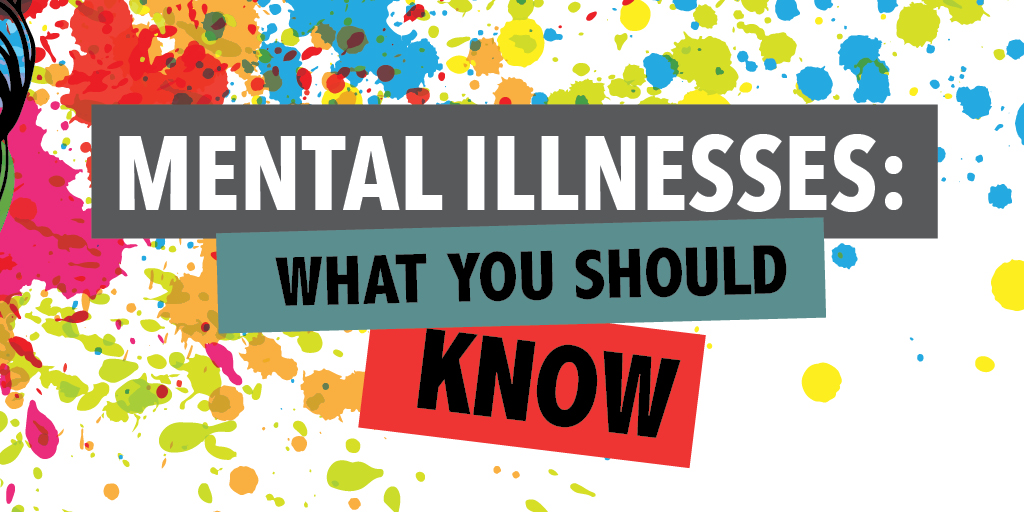Mental illness: what you should know

According to the Canadian Mental Health Association (CMHA), approximately 10-20 per cent of youth are affected by a mental illness or disorder and roughly 49 per cent of people who believe to suffer from depression or anxiety have never visited a doctor about the issue.
Mental illnesses and disorders are more common that people may think, as on any given year one in five Canadians will personally experience a mental health problem or illness.
Unless researched and studied on individual time, much of our information and exposure can be linked back to representations from mass media which although increases accessibility to the subject, facts and knowledge may be twisted for sensationalist, entertainment and/or plot purposes.
Depression is a mental illness which according to psychiatry.org “negatively affects how you feel, the way you think and how you act”.
Symptoms can include but are not limited to a loss of energy, increase or decrease of appetite, feelings of worthlessness and guilt, thoughts of death or suicide and loss of pleasure from activities that were once enjoyed.
Although it is frequent to intermix periods of grief with depression as they share similar commonalities, the latter is diagnosed after at least two weeks of experiencing symptoms.
For more information visit: psychiatry.org/patients-families/depression/what-is-depression.
Stress is defined by the Canadian Mental Health Association (CMHA) as “the body's response to a real or perceived threat. That response is meant to get people ready for some kind of action to get them out of danger.”
Symptoms of stress can include difficulty concentrating and/or making decisions and physical symptoms such as increased heart rate, sweating and tense muscles.
CMHA recommends taking steps such as identifying the problem, solving the problem as they come up, talking about the issue, being physically active, learning helpful thinking strategies as well as stress management to help combat and cope with stress.
For more information visit: cmha.ca/ mental_health/stress/#.WXiykxiZNsM
Anxiety, as classified by Medicalnewstoday.org is a “general term for several disorders that cause nervousness, fear, apprehension and worrying”
Anxietybc.com outlines some physical signs of anxiety with sensations such as rapid heartrate and breathing, upset stomach, tight or painful chest, and a tingling, dizziness or light headedness being attributed to the term.
The website also recommends “learning about anxiety, learning to relax, challenging worrisome thoughts and facing fears” as ways to cope with feelings of anxiety.
For more information visit: medicalnewstoday.com/info/anxiety.
Eating disorders according to eatingdisorderhope.com “describe illnesses that are characterized by irregular eating habits and severe distress or concern about body weight or shape.”
The three most common and recognized eating disorders are bulimia nervosa, anorexia nervosa and binge eating disorder.
Bulimia Nervosa is characterized by consuming large amounts of food otherwise known as binging and taking action through self-induced vomiting, over exercising or digesting laxatives or diuretics to compensate for the binge.
Anorexia Nervosa involves the extreme limitation of one's calories, most typically due to an extreme fear of weight gain. Those diagnosed with anorexia will often see their body as large or overweight despite the reality that they are underweight.
Binge eating is similar to Bulimia Nervosa wherein a person loses control over their relationship with food resulting in consuming excess food but it is not followed by an action to compensate for the binge.
For more information visit: eatingdisorderhope.com/information/eating-disorder.
Bipolar Disorder is characterized on webmd. com by “extreme changes in mood, from mania to depression. Between these mood episodes, a person with bipolar disorder may experience normal moods.”
Early warning signs include “needing less sleep, being more active, feeling unusually happy, irritable or energetic, making unrealistic plans or focusing intensely on a goal, being easily distracted and having racing thoughts, having unrealistic feelings of self-importance and being more talkative.” For more information visit: webmd.com/bipolar-disorder/guide/what-is-bipolar-disorder and webmd.com/bipolar-disorder/managing-a-manic-episode.
Schizophrenia is described by psychiatry.org by which “the patient is unable to distinguish between real and unreal experiences.”
People in an episode of schizophrenia may find themselves hallucinating wherein they are hearing voices or seeing distorted perceptions, confused and unable to clearly think and/or speak, having difficulty keeping attention, focusing or expressing emotion.
For more information visit: psychiatry.org/patients-families/schizophrenia/what-is-schizophrenia.














